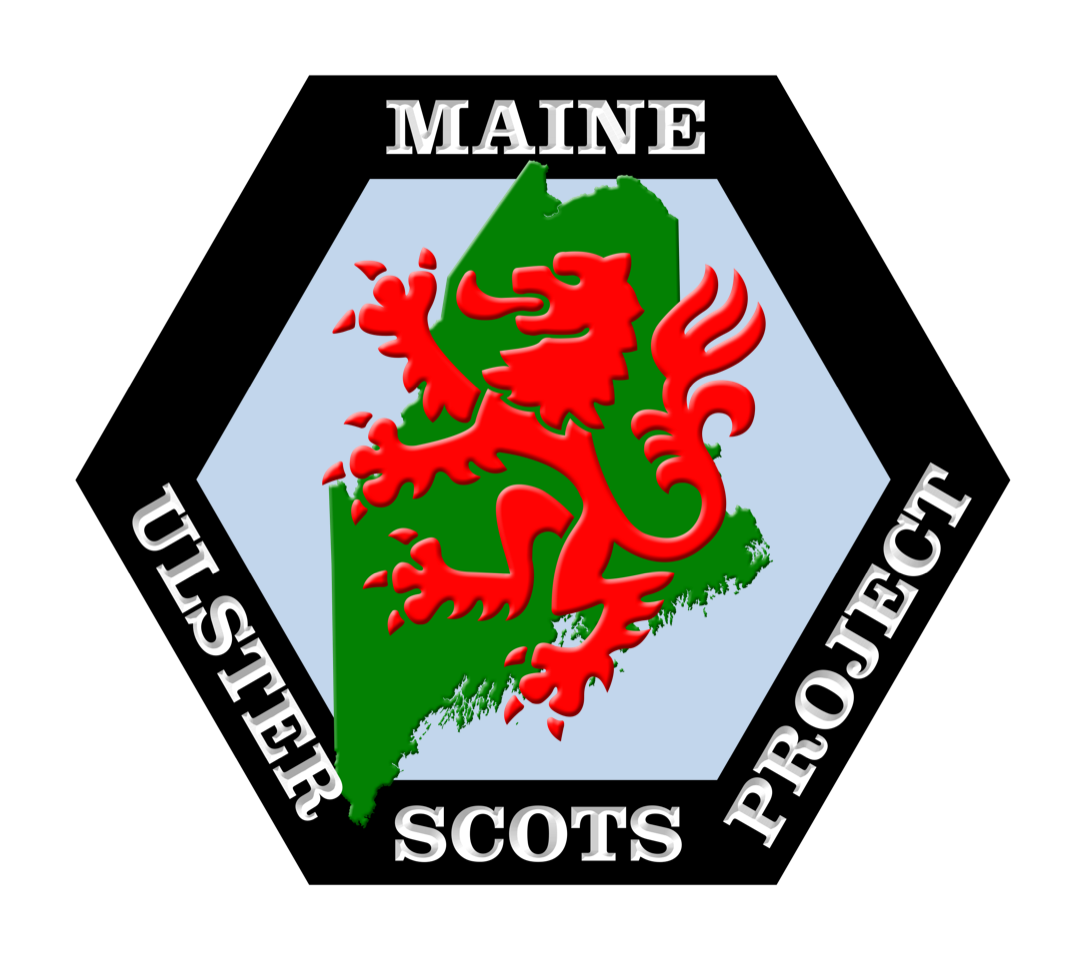THE SOMERSETT SITE
An archaeological portrait of an Ulster-Scots habitation on the Maine frontier
PAMELA CRANE
The following pages are reproduced from: “1718-2018, Reflections on 300 years of the Scots- Irish in Maine”
printed following the academic conference held at Bowdoin College, Maine in August 2018.
© 2019 Maine Ulster-Scots Project and the Ulster-Scots Agency
PART 4
Artifacts
The McFaddens lived at Somersett for four years, but the site is remarkable for its paucity of artifacts. This may reflect on the McFaddens relative wealth or poverty, frugality, or merely the difficulty of obtaining luxury goods in times of conflict. Items found made up the necessities for establishing a basic competency in the wilderness, and included tools for house construction, hunting and defense, food production and consumption, and medicine. The only non-useful items found on the site were related to tobacco smoking. As the excavations and artifact analysis are ongoing; the following is not a complete catalogue.
Tools
The array of tools found during the excavations included those for house construction and agriculture. Spades and hoes are commonly found on sites during the seventeenth and eighteenth centuries, and no wonder. Both of these tools are integral to the basics of life: food and shelter and both were found on the site.
Part of a spade was recovered from the area of the animal keep (Figure 8). Early spades were made of wood and fitted with a steel bit, or shoe. Only one side of a shoe was found, but spades of this era usually measured between 19.6 to 29.4 centimeters. These artifacts are frequently found on sites dating before 1700, but less commonly thereafter.(12) Spade shoes were found during the excavations at colonial Pemaquid in Bristol. A series of forts were built at Pemaquid, including Fort Pemaquid, 1677 to 1689, Fort William Henry 1692 to 1696, and Fort Frederick, 1729 to 1759. The spade shoes were found at Fort William Henry, and at Fort Frederic, in contexts dating from 1729 to 1731.(13)
Figure 8
Because iron was relatively expensive during the seventeenth and early eighteenth centuries, digging spades were frequently made of wood fitted with and iron bit, or shoe.
Figure 9
Hoe blade (a) and tool ferrule (b). Found separately, they might once have been part of a single tool. Hoes have an obvious role in agriculture, but this specimen could also have been used to loosen hard soil to be removed with the spade.
The hoe blade is complete, but ferrule formerly holding it to a wooden handle is broken. The blade measures 17.2 centimeters (Figure 9). In adding to its use as a garden tool, it is likely that the McFaddens used this implement for grubbing out the cellar–the removal of approximately 33 square meters of earth and stone.
There a few more tools related to construction and tool maintenance recovered from the excavation. These include a fragment of a saw and a complete awl, measuring 7.8 centimeters. Formerly used to sharpen bladed tools, there were five whet stones fragments; four of these were middle piece, square in cross section, the other is an end piece with beveled sides.
Firearms
Clearly, Jane and Andrew had at least one firearm for hunting and protection. Site volunteers recovered gunflints, flakes left over from gunflint repair, and shot.
Gunflints are part of the sparking-mechanism of muskets, whereby a spark generated for the contact of flint and iron ignites gunpowder, propelling lead shot. There are two kinds: spall-type or the blade-type. English makers used chert black, gray, and tan “flint” found in the chalk beds in Suffolk County, England. They manufactured gunflints individually from flint nodules, resulting in a characteristic wedge shape. By the third quarter of the seventeenth century, the French began to make gunflints from prepared blades, a technology that produce gunflints of a more uniform size. Whereas the English used chert, the French used amber-colored, fine-grained, translucent flint for making gunflints.(14)
There is at least one complete spall-type gunflint found at Somersett, as well as five burned fragments that were found on the cellar floor. Additionally, there is gray, black, and tan chert debitage. The volunteer archaeologists found a few amber flakes; though blade-type gunflints are commonly found on English colonial sites during the Revolution, blonde-colored blade-type gunflints were imported from France for domestic and military use, and for use in the fur trade. Possibly, the Norridgewock, or their French and Wabanaki allies, repaired their flints after the August 1722 raid.
Preservation on the site was excellent; usually Maine’s soils are too acidic for perishable artifacts to survive. There are two fragments of white paper with red stripes. Molly Carlson, of Head of Tide Archaeological Conservation, identified these as paper charges, that is, pre-measured packets of gunpowder to be loaded into the gun pan before firing.(15) There were only two pieces of lead shot found: one swan and one birdshot. There was not a single piece lead bar, solidified puddles of molten lead, or lead sprue: the McFaddens were not casting their own lead shot. They were likely obtaining munitions from the trading post at Fort Richmond.
The pages above are reproduced from: “1718-2018, Reflections on 300 years of the Scots- Irish in Maine”
printed following the academic conference held at Bowdoin College, Maine in August 2018.
© 2019 Maine Ulster-Scots Project and the Ulster-Scots Agency
All rights reserved. No part of this publication may be reproduced, stored in a retrieval system, or transmitted in any form or by any means, electronic, mechanical, photocopying, recording or otherwise, without the prior written permission of the publisher and copyright holder.
Read more and order the 256 page book at: https://www.maineulsterscots.com/reflections




